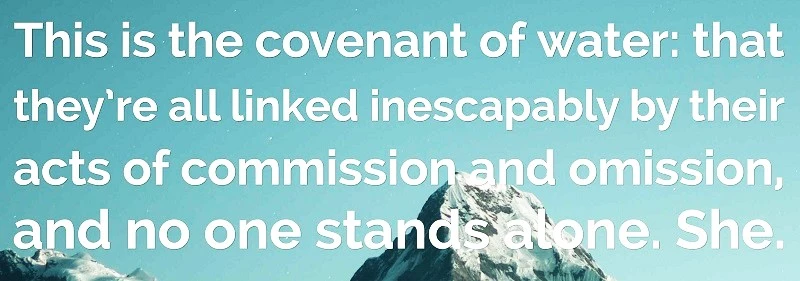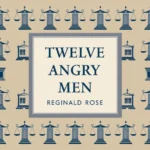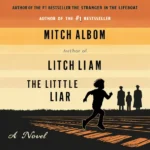Introduction
“The Covenant of Water PDF” by Abraham Verghese is a deeply evocative novel that intricately weaves together themes of family, culture, history, and the power of nature. Set in India, the book takes readers on a journey across generations, capturing the essence of life in South India and the profound connections between its characters. Known for his powerful storytelling, Verghese delivers a rich narrative that explores the profound relationships between people and the land, water, and traditions they inherit.
| Name of PDF | The Covenant of Water |
|---|---|
| No Pages | 736 |
| Author | Abraham Verghese |
| Originally Published | May 2, 2023 |
| Language | English |
| Genres | Historical Fiction, Saga, Domestic Fiction |
| Size | 3.11 MB |
| Chek, latest edition |
Table of Contents

About the Author: Abraham Verghese
Abraham Verghese is a renowned physician and author, known for his works that blend the art of storytelling with his rich medical background. Born in Ethiopia to Indian parents, Verghese’s experiences growing up in a multicultural environment have heavily influenced his writing. His previous works, such as Cutting for Stone, have received critical acclaim for their detailed exploration of the human condition, and his style is often lauded for its depth and empathy. Verghese’s unique voice in literature comes from his ability to merge his medical knowledge with compelling narratives about love, loss, and healing.
Plot Summary of “The Covenant of Water PDF book”
The novel unfolds against the backdrop of 20th-century India, following multiple generations of a South Indian family. At its core, the story revolves around the protagonist, whose life is shaped by the covenant her family holds with water. The narrative spans decades, highlighting the interplay between human lives and the natural world. From family secrets to personal struggles, each character in the novel deals with the push and pull of life’s forces, including the ever-present water that both nurtures and endangers them.
Historical Context
“The Covenant of Water” is set in South India during a time of significant social and political change. The novel captures the colonial and post-colonial eras, showing how historical events shape the lives of individuals and families. Verghese uses this backdrop to enrich the story, painting a vivid picture of India’s transition from British rule to independence. The historical context gives readers an understanding of how larger political events impact the intimate lives of the characters.
Themes in “The Covenant of Water”
One of the central themes in the novel is water, which functions as both a literal and metaphorical element. Water symbolizes life, death, and the unknown, acting as a binding force for the family and the land they live on. Another important theme is family—particularly the inheritance of traditions, values, and secrets that pass from one generation to the next. The novel also explores human resilience and the connections we form with each other despite the challenges we face.
The Power of Nature in the Novel
Verghese beautifully portrays nature as a force that both nurtures and threatens life. Water, in particular, is depicted as a powerful entity—capable of giving life through crops and sustenance, yet also a source of fear during floods and disasters. The environment becomes a character of its own, shaping the destinies of the human characters as they learn to navigate its unpredictable rhythms.
Character Analysis
The characters in “The Covenant of Water” are richly developed and multi-dimensional. The protagonist stands at the center of the novel, embodying the strength and perseverance that defines the family. Her journey is one of self-discovery, shaped by the traditions and history that surround her. Supporting characters, each with their own backstories, add complexity to the novel. Together, they illustrate the intergenerational bonds that drive the story forward.
Cultural Representation
Verghese’s portrayal of South Indian culture is authentic and detailed, offering readers a glimpse into the customs, traditions, and community life that form the backbone of the novel. From religious ceremonies to the communal sharing of food, the cultural elements add depth to the characters and their experiences. The role of community is especially significant, as it helps to sustain the characters through their trials and triumphs.

The Role of Medicine and Healing
Given Verghese’s background as a physician, it’s no surprise that medicine and healing play a prominent role in the narrative. Characters grapple with illness, loss, and the struggle to heal both physically and emotionally. The medical aspects of the story not only reflect Verghese’s expertise but also serve as metaphors for the healing power of human connection and resilience.
Narrative Structure and Style
Verghese employs a layered narrative structure, with the story spanning multiple timelines and generations. His writing style is fluid and evocative, drawing readers into the emotional world of the characters. The use of rich, descriptive language enhances the reading experience, making the natural and emotional landscapes come alive.
Symbolism and Metaphors
Water is the most significant metaphor in the novel, symbolizing life, death, and the unknown forces that shape human existence. Other symbols, such as land and family heirlooms, also play important roles in the narrative, representing continuity and the passage of time. Verghese’s use of symbolism adds depth to the story, encouraging readers to reflect on the deeper meanings behind the characters’ experiences.
Critical Reception
“The Covenant of Water” has been widely praised by critics for its immersive storytelling, well-drawn characters, and emotional depth. Readers have lauded Verghese’s ability to craft a narrative that is both intimate and expansive, touching on universal themes while remaining grounded in a specific cultural and historical context. The novel has been nominated for and received several literary awards, further cementing its place as a standout work of fiction.
Comparisons to Verghese’s Previous Works
While Cutting for Stone remains Verghese’s most famous novel, “The Covenant of Water” stands out for its exploration of different themes, particularly the connection between humans and nature. While both novels delve into themes of family and medicine, The Covenant of Water places a stronger emphasis on the natural world and its role in shaping human destiny.
Why “The Covenant of Water” Stands Out
What sets “The Covenant of Water” apart is its ability to capture the essence of life in a specific time and place while also addressing universal themes of family, identity, and survival. Verghese’s intricate storytelling and his rich descriptions of South Indian life make this novel a compelling read for those interested in both historical fiction and emotional, character-driven stories.
Conclusion
In “The Covenant of Water,” Abraham Verghese has crafted a novel that is both poignant and powerful. Through its exploration of family, culture, and the forces of nature, the book leaves a lasting impact on its readers. Verghese’s skillful storytelling, combined with his deep understanding of human relationships, makes this novel a must-read for fans of literary fiction.

FAQs about The Covenant of Water PDF
What is the main theme of “The Covenant of Water”?
The main theme revolves around the connection between family, nature, and tradition, with water serving as a powerful symbol throughout the novel.
How does Verghese’s background in medicine influence the novel?
Verghese’s medical expertise adds depth to the novel’s exploration of healing, both physical and emotional, and helps to frame the characters’ struggles with illness and health.
Is “The Covenant of Water” a standalone novel?
Yes, it is a standalone novel, though it shares thematic similarities with Verghese’s other works.
How does water function as a symbol in the story?
Water symbolizes life, death, and the unknown, acting as a force that shapes the characters’ lives and the family’s history.
What cultural elements are represented in the book?
The novel portrays South Indian culture, including traditions, community life, and the spiritual connection to nature.
Is The Covenant of Water being made into a movie
Oprah Winfrey said that she has bought the rights to ‘The Covenant of Wate
Is The Covenant of Water based on a true story?
The novel was inspired by the life story of Verghese’s mother Mariamma
Is The Covenant of Water worth reading?
It’s a long book, but worth it.
What is The Covenant of Water about?
follows a family in southern India across three generations as they grapple with a chilling affliction – the death by drowning of at least one member of every generation.




